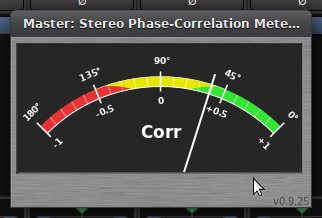Aside from the kick in the disco music style, which I leave in mono, I’ve never worried about the monocompatibility of an electronic piece. Do you think it’s important to make sure that the piece sounds “not too different” even in mono?
a.
Aside from the kick in the disco music style, which I leave in mono, I’ve never worried about the monocompatibility of an electronic piece. Do you think it’s important to make sure that the piece sounds “not too different” even in mono?
a.
Hi,
(a) I’m not a producer of EDM so I have no valid opinions and experience with the established production methods… however…
(b) Panning like anything else should be simply one of the sonic palettes used to create a final creative work and I think having rules about how to pan things has been one of the limiting factors that has homogenized modern music into an extremely predictable and boring listening space. When Stereo came into popularity in the late 60’s one of the things that made the music of that era so groundbreaking and unique was the use of Stereo imaging as another way to add color and interest to a mix. Why not experiment with panning bass instruments in a new and unique interesting way in an EDM context and see what happens and if you find something fresh in an established format? You can always go back to the status quo if you don’t like it and there are plenty of derivative and predictable works to study how it’s supposed to be done…
Not being an EDM producer either I heard rumours that some clubs only play music in mono. In that case I would make sure that my music does not loose any power when played in mono.
You can check with a Stereo Correlation Meter (x42-plugins come with one)

As long as the mix in above zero, preferably in the green area, left/right channels do not cancel each other out. This is preferable even for a stereo mix regardless of mono compatibility.
There was a recent news article about a new electronic club opening up near me. Funny thing, they spent most of the article bragging about the ‘sound’ of the space, but when you see how the system is designed you realize they made some very basic and simple mistakes (The system was obviously not designed by an audio engineer). Among other things, the majority of that space was in fact mono coverage at best, which isn’t a bad thing and happens FAR more often than you would think, but for a space that bragged about how good it was for electronic music, was a poor choice.
Just because there are two (or more) speakers doesn’t mean that the system is still not mono coverage.
Seablade
^^ Live sound system design consultant, among other things.
When mixing audio, be it for music or for film you have to keep in mind the variety of sound systems it will be played back on.
While EDM is relatively club-oriented, you don’t really have a clue what exactly it will be played back on. As Seablade said it above, you’d be surprised by the quality of of sound systems in big clubs or even concert venues.
On top of that if your mix has low mono-compatibility it’s likely due to phase issues. These won’t sound right even on a perfect stereo monitoring system (you can try that in ardour by inverting the phase of one monitor channel when playing back a mono region: You’ll get to enjoy the feeling of sound seemingly being drilled into one of your ears.
But venues is only part of what your music will be played back on. You have to account for all the consumer-grade playback systems. Like bluetooth speakers, car stereos, headphones, phone speakers, laptop speakers etc.
A lot of those are not full range, and are rarely a good stereo setup. In fact a fair amount of those would qualify as “pseudo-mono”. That’s why it’s important to check for mono-compatibility, on top of other checks like small speakers, car speakers etc… A good mix will sound good on anything.
Simply put; The broader the pool of systems you’re targeting, the less you should rely on psycho-acoustic effects that are setup dependent.
This topic was automatically closed 28 days after the last reply. New replies are no longer allowed.